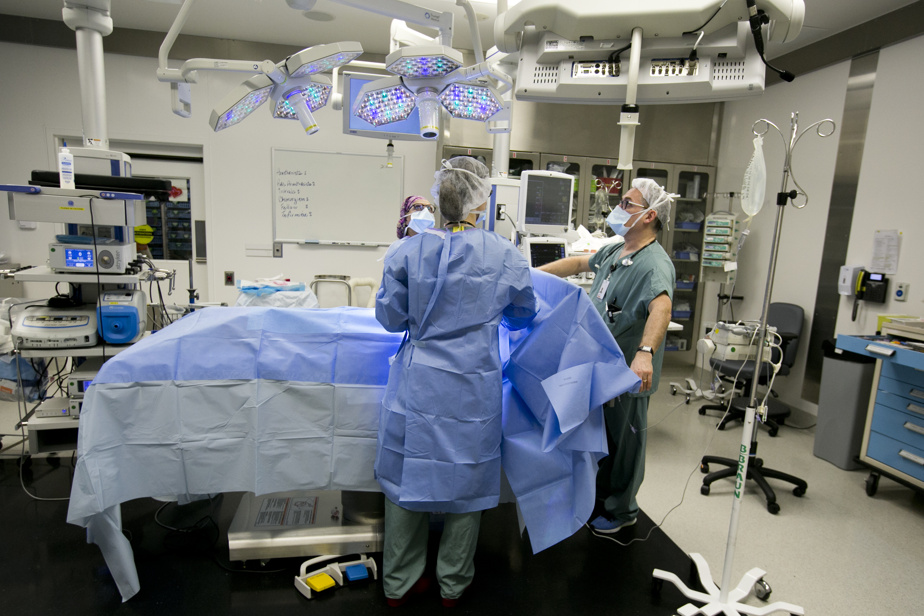(Montreal) In order to reduce the carbon footprint in the healthcare network, the National Institute of Excellence in Health and Social Services (INESSS) recommends changing anesthetic products during surgeries.
General anesthesia consists of putting the patient to sleep, among other things with an inhaled gas, before a surgical operation. According to the work of INESSS, there would be no impact on the progress of the anesthesia depending on the choice of halogenated gas. Consequently, it recommends anesthesia with sevoflurane and the elimination “except in very exceptional situations” of the use of desflurane.
The choice of an anesthetic agent is based on its clinical performance and safety profile, which are defined in particular by its diffusibility and potency. Desflurane anesthesia has a carbon footprint approximately 40 times higher than sevoflurane anesthesia when its potency and the 20-year global warming potential (GWP20) are taken into account.
“In 2023, even though the number of hours of general anesthesia associated with desflurane represented only 3% of the total number of hours of anesthesia associated with halogenated agents, it generated 51% of the tonnes of CO equivalent2 associated with these agents,” writes INESSS in its opinion.
In an environmental context, anesthesiologists are increasingly questioning the use of desflurane and nitrous oxide because of their high carbon footprint.
The shift in practices in the health network has already begun in Quebec. The number of desflurane bottles supplied to operating rooms has decreased by approximately 80% between 2019 and 2023.
The proportion of hours of inhalation anesthesia with desflurane has decreased from 16% in 2019 to 3% in 2023, according to INESSS calculations. This has made it possible to reduce the equivalent of 31,959 tonnes of CO2 in 2019 to 5948 tonnes in 2023, produced by this anesthetic agent.
Furthermore, the gradual replacement of desflurane with sevoflurane could save $204,400 over three years. In an email sent to The Canadian Press, INESSS said it is confident of a secure supply with three potential suppliers of sevoflurane. “The risk of an absolute shortage of this product is low,” it wrote, adding that there are other methods of intravenous general and locoregional anesthesia.
The Ministry of Health and Social Services has given INESSS the mandate to formulate recommendations on the best clinical practices to implement to reduce the carbon footprint of general inhalation anesthesia without compromising the safety of care. The ministry made this request following a request from the Association des anesthésiologistes du Québec.
In Quebec, the health sector generates 3.6% of the province’s GHG emissions. Of this percentage, 3% comes from the use of inhaled medications in the treatment of chronic lung diseases and anesthetic gases used mainly in the operating room.
Despite a rather minimal impact on overall GHG emissions in Quebec, changes in anesthetic products will contribute to the Ministry of Health’s objective of greening operating room practices, and more broadly of achieving carbon neutrality in Quebec by 2050.
To achieve concrete results, INESSS believes that the Ministry of Health should remove desflurane from the provincial list of medications for establishments.
Hospitals and other facilities should gradually return desflurane-compatible vaporizers and cassettes by the end of current leases. Facilities should also have an action plan in place to reduce the carbon footprint of anesthetic gases, including tracking consumption of inhaled anesthetic agents and documenting medical reasons for exceptional use of desflurane.
The Canadian Press’ health content is funded through a partnership with the Canadian Medical Association. Editorial choices are solely the responsibility of The Canadian Press.
